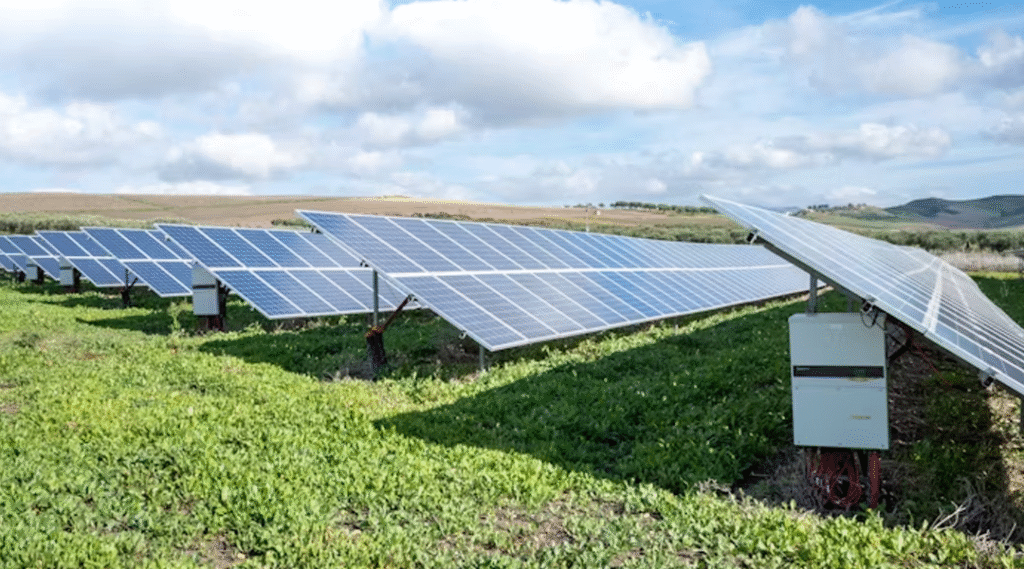As global priorities shift toward decarbonization and sustainable development, policymakers and investors face a critical question: Which clean energy source offers the greatest environmental, economic, and social returns? By examining Levelized Cost of Electricity (LCOE), capacity factors, carbon reduction potential, and scalability, this article provides a deep analysis to identify the best clean energy for driving long‑term sustainability.
1. Solar Energy: Rapid Growth, Declining Costs
- LCOE Advantage: According to the International Renewable Energy Agency (IRENA), the global weighted‑average LCOE for utility‑scale solar photovoltaic fell to $37 per MWh in 2024, down 85 % since 2010.
- Capacity Factor: Modern solar farms achieve 20–25 %, limited by daylight hours but bolstered by improved panel efficiency.
- Scalability: Solar capacity additions reached 180 GW in 2023, representing over 40 % of new renewable installations worldwide.
Data Insight: In sun‑rich regions, solar achieves up to 10 GW per year, making it the fastest‑growing renewable. However, land‑use intensity (approx. 2 hectares per MW) and intermittency require pairing with storage solutions to maximize sustainability.
2. Wind Energy: High Capacity, Low Emissions
- LCOE Competitiveness: Onshore wind energy posts a global LCOE of $38 per MWh, nearly matching solar costs, while offshore wind averages $60 per MWh due to higher installation expense.
- Capacity Factor: Onshore turbines deliver 35–45 %, with offshore farms reaching 45–55 % thanks to stronger, consistent winds.
- Carbon Reduction: Each 1 MW of wind capacity offsets roughly 2,000 tonnes of CO₂ annually, per the U.S. Department of Energy.
Data Insight: Global wind installations surpassed 90 GW in 2023, with Asia and Europe leading deployment. Wind’s higher capacity factor and minimal water usage make it a top contender for stable, low‑emission power.
3. Hydroelectric Power: Proven but Spatially Constrained
- LCOE Stability: Large‑scale hydropower operates at an LCOE of $50 per MWh and boasts a capacity factor of 40–60 %, depending on reservoir management.
- Socio‑Environmental Impact: While reservoirs support flood control and irrigation, they can displace communities and affect river ecosystems.
- Scale: Hydropower contributes 1,300 GW globally, making it the largest single source of renewable electricity today.
Data Insight: Despite its maturity, future hydropower growth is limited by geography and environmental concerns, suggesting it remains a vital but regionally constrained solution.
4. Geothermal Energy: Baseline, Low Footprint
- LCOE and Reliability: Geothermal plants deliver baseload power with an LCOE of $45 per MWh and capacity factors above 90 %, thanks to continuous underground heat extraction.
- Resource Availability: Viable primarily in tectonically active regions; global installed geothermal capacity stands at 16 GW as of 2023.
- Land‑Use Efficiency: Requires less than 0.1 hectares per MW, offering a minimal surface footprint.
Data Insight: While geothermal’s limited geographic applicability restricts global impact, its high reliability and low variability make it an ideal complement to intermittent renewables.
5. Biomass Energy: Versatile but Carbon Considerations
- LCOE Range: Biomass plants average $70 per MWh, reflecting feedstock and logistics costs.
- Carbon Balance: When sourced from sustainable forestry or agricultural residues, biomass can achieve near‑carbon neutrality; however, supply chain emissions vary.
- Scalability: Global biomass capacity reached 150 GW in 2023, with strong potential in regions with abundant agricultural waste.
Data Insight: Biomass offers dispatchable power and waste‑to‑energy solutions but requires rigorous sustainability standards to ensure net carbon benefits.
Comparative Summary
| Energy Source | LCOE ($/MWh) | Capacity Factor | Scalability | Land Use (ha/MW) |
| Solar PV | 37 | 20–25% | Very High | 2.0 |
| Onshore Wind | 38 | 35–45% | High | 0.5 |
| Hydropower | 50 | 40–60% | Medium | 3.0 (variable) |
| Geothermal | 45 | ~90% | Low | 0.1 |
| Biomass | 70 | 80% | Medium | 1.0 |
A Hybrid Path Forward
No single best clean energy source universally dominates—each has unique strengths. Solar and onshore wind lead in cost declines and deployment scale, making them the backbone of sustainable development. Geothermal and hydropower provide dependable baseload power, while biomass leverages waste streams for dispatchable energy.
Strategic Recommendation: Energy planners should pursue a hybrid mix—prioritizing solar and wind for rapid expansion, supplemented by geothermal and hydropower for reliability, and bolstering grid flexibility with biomass and storage solutions. This diversified portfolio maximizes carbon reduction, economic returns, and resilience, paving the way for truly sustainable energy systems.
More for Clean Energy:
Harnessing the Depths and Tides: A Deep Dive into Hydro, Marine & Geothermal Energy
Unlocking the Future: How to Improve Energy Storage Efficiency for a Sustainable Energy System
The Future of Energy Storage: Challenges, Solutions, and Emerging Trends
Solar Power: Illuminating the Path from Rooftops to Utility-Scale Farms
As for in-depth insight articles about AI tech, please visit our AI Tech Category here.
As for in-depth insight articles about Auto Tech, please visit our Auto Tech Category here.
As for in-depth insight articles about Smart IoT, please visit our Smart IoT Category here.
As for in-depth insight articles about Energy, please visit our Energy Category here.
If you want to save time for high-quality reading, please visit our Editors’ Pick here.



